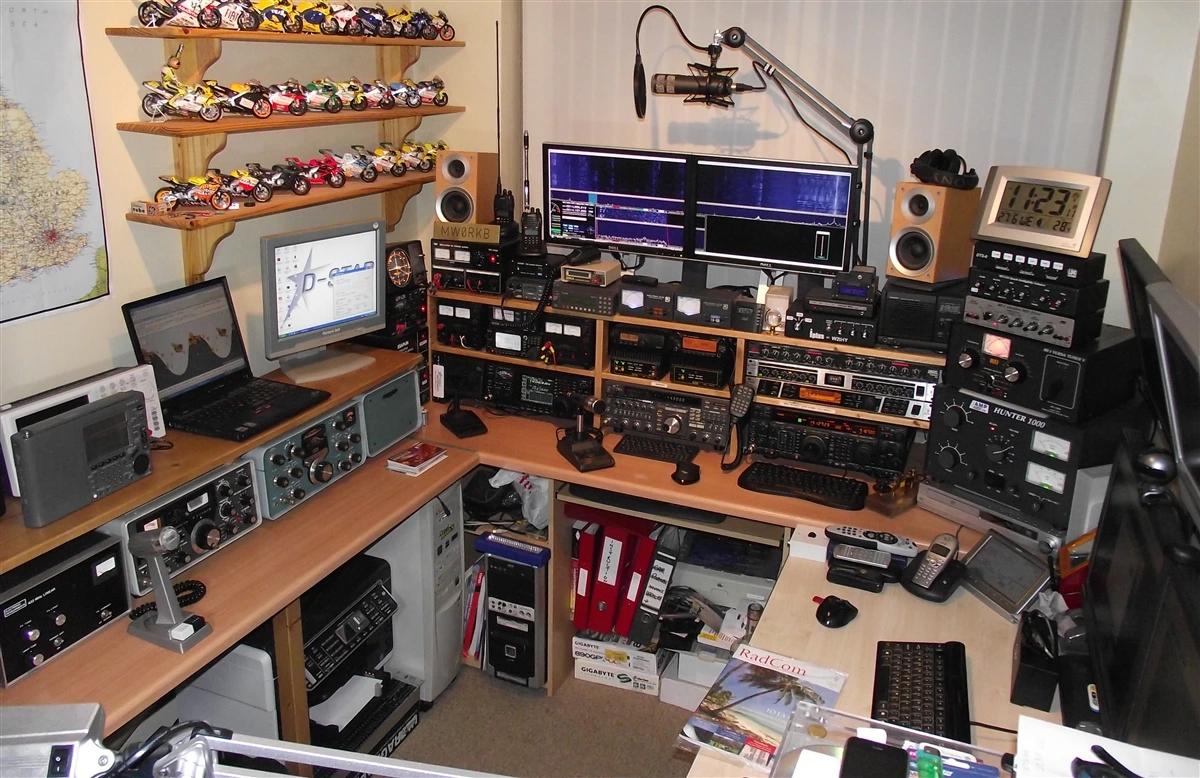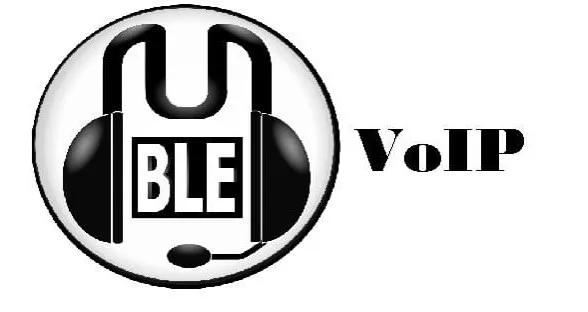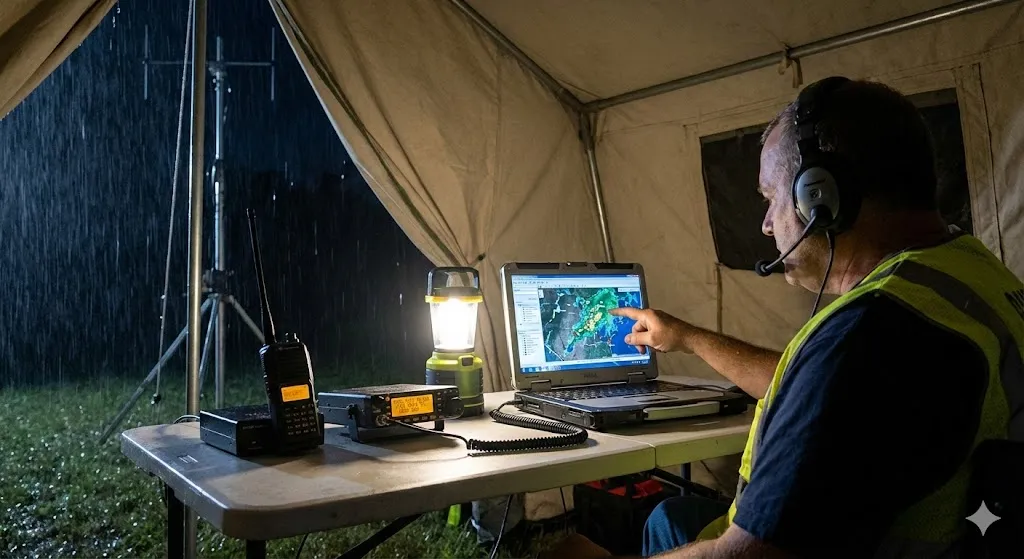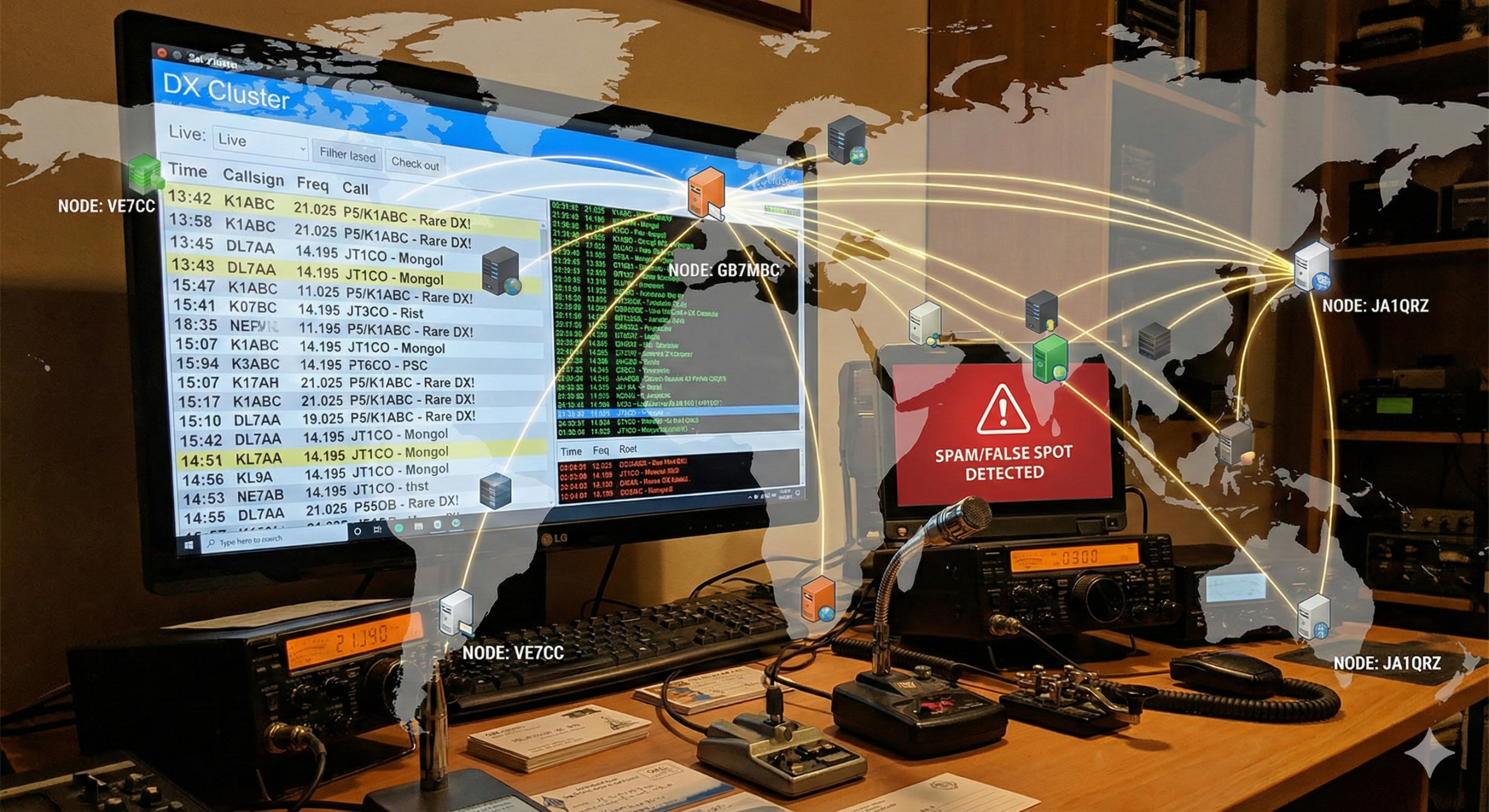amateur radio
ham radio
radio amatur
9m2pju, amateur radio, APRS, digital modes, EmComm, ft8, ham radio, ham radio for beginners, ham radio license malaysia, ham radio malaysia community, ham radio myths, how to become ham operator, malaysia ham radio, POTA, radio myths debunked, rae malaysia, sota, winlink
9M2PJU
0 Comments
Myth-Busting Ham Radio: Separating Facts from Fiction
Amateur radio, often referred to as ham radio, has been around for over a century. Yet, in 2025, it’s still surrounded by confusion, outdated assumptions, and flat-out myths. Some believe it’s only for retirees, others assume it’s obsolete thanks to smartphones and the internet. But ham radio isn’t just alive—it’s thriving.
In Malaysia and around the world, people from all walks of life are picking up microphones, tapping keyboards, and building antennas to connect through the airwaves. If you’re skeptical about amateur radio, this article is for you. Let’s bust the most common myths and explore what ham radio truly offers in the modern world.
Myth #1: “Ham Radio is Obsolete—We Have the Internet Now!”
Fact: Ham radio is not obsolete—it’s more relevant than ever.
While the internet is convenient, it depends on infrastructure: cell towers, fiber optics, data centers, electricity, and satellites. When any of these fail—due to natural disasters, cyberattacks, or political instability—communication can go dark instantly.
Ham radio doesn’t rely on any of that. Operators can communicate locally, nationally, or globally with or without the internet. HF bands allow global contacts using nothing but the ionosphere. VHF and UHF enable city-wide comms. And digital tools like Winlink allow users to send emails over radio.
This makes ham radio indispensable for:
- Emergency communications (EMCOMM)
- Search and rescue
- Natural disasters (like floods, typhoons, and earthquakes)
- Remote expeditions and off-grid living
When the grid fails, amateur radio still works.
Myth #2: “You Need to Know Morse Code to Get a License”
Fact: Morse code is no longer required for any license class in Malaysia.
For decades, Morse code—or CW—was a core part of ham radio licensing. In Malaysia, this was especially true for Class A licenses, which grant access to high transmission power and more high-frequency (HF) bands. But times have changed.
As of recent MCMC updates, CW testing has been removed from the requirements for Class A. That means you can now enjoy full privileges—including worldwide DX on HF—without learning Morse code.
Still, many hams enjoy CW as a mode. It’s efficient, low-power, and fun. But now it’s optional, not mandatory.
Myth #3: “Ham Radio is Only for Old People”
Fact: Ham radio is a hobby for all ages, and young people are joining in increasing numbers.
While it’s true that many veteran hams have decades of experience, the face of amateur radio is getting younger. Across Malaysia and beyond, students, university tech enthusiasts, hikers, and gamers are joining the airwaves.
Here’s why young people are tuning in:
- STEM learning: Radio theory, electronics, propagation.
- DIY electronics: Raspberry Pi, Arduino, ESP32, SDR (Software-Defined Radio).
- Adventure radio: Parks on the Air (POTA), Summits on the Air (SOTA).
- Digital communications: APRS, FT8, DMR, AllStarLink, and more.
Groups like Youth on the Air are helping to build the next generation of operators.
Myth #4: “Ham Radio is Just Talking on a Microphone”
Fact: That’s only a tiny part of what amateur radio offers.
Ham radio today is incredibly diverse. Yes, you can talk on voice using FM, AM, or SSB—but the hobby has expanded far beyond that. Here’s what modern hams are doing:
- Digital Modes: Like FT8, JS8Call, SSTV (sending images), VARA, and D-STAR.
- Satellites: Communicate through low-earth orbit amateur satellites and even bounce signals off the International Space Station (ISS).
- EME (Earth-Moon-Earth): Bounce signals off the Moon to reach the other side of the world.
- DIY projects: Build your own antennas, radios, and even repeaters.
- Portable ops: Run radios from mountains, beaches, or jungle trails.
- Packet radio & keyboard-to-keyboard chat over long distances.
Amateur radio is a hands-on playground for experimentation, learning, and innovation.
Myth #5: “Getting Licensed is Difficult and Expensive”
Fact: It’s easier and more affordable than most hobbies.
In Malaysia, the MCMC offers three amateur radio license classes:
| Class | Frequency Access | Callsign Prefix | Exam Requirement | Morse Required? |
|---|---|---|---|---|
| Class C | VHF/UHF | 9W3 | RAE C | No |
| Class B | HF/VHF/UHF | 9W2/9W6/9W8 | RAE B | No |
| Class A | HF/VHF/UHF | 9M2/9M6/9M8/9M4 | RAE A | No |
- The RAE (Radio Amateur Exam) is a multiple-choice technical test.
- Study materials are available for free online (SEMS, YouTube, Facebook groups).
- Many pass on the first try with just a few weeks of study.
- License fees are reasonable.
A basic VHF handheld transceiver costs as little as RM100, and you can upgrade gear as you grow.
Myth #6: “You Need a Big House or Tower”
Fact: You can operate ham radio from condos, apartments, cars, or even a backpack.
Sure, big towers and large antennas help, but they’re not required. Many Malaysian hams live in urban flats or tight spaces.
Ways to get on the air with limited space:
- Magnet-mount antennas on a metal balcony.
- End-fed wires thrown over trees.
- Portable HF setups for POTA/SOTA.
- Internet linked repeater networks for wide-area comms with a handheld.
You don’t need a mansion. Just creativity and curiosity.
Myth #7: “Ham Radio Can’t Do GPS or Real-Time Data”
Fact: Welcome to APRS—the real-time digital backbone of ham radio.
APRS stands for Automatic Packet Reporting System. It allows hams to:
- Send GPS coordinates from moving vehicles, balloons, or hikers.
- Transmit weather data, battery voltage, or sensor readings.
- Text message between stations.
APRS works over frequencies using packet radio. It integrates with:
- Digipeaters (which forward packets across the network)
- I-Gates (which send packets to the internet for global viewing)
- Mobile apps and open-source software
This system is popular for:
- Tracking during marathons or search-and-rescue.
- Mapping activators for SOTA/POTA.
- Emergency location reporting during floods or landslides.
APRS proves that ham radio is fully capable of real-time, tactical, and off-grid tracking.
Myth #8: “Ham Radio is Dying”
Fact: Ham radio is growing.
Reasons for the rise:
- Resilient communication in unstable times.
- Increased interest in self-reliance and off-grid living.
- Integration with modern tech: SDR, LoRa, digital modes, Raspberry Pi.
- Youth engagement through schools, clubs, and scouting.
Final Thoughts
Ham radio is not a relic. It’s a resilient, evolving, and surprisingly modern hobby that connects people in ways the internet never can. From voice to digital modes, from APRS tracking to satellite contact, it offers something for everyone.
Whether you’re interested in electronics, communication, emergency preparedness, or just talking to someone across the world without needing a SIM card—ham radio welcomes you.







Post Comment